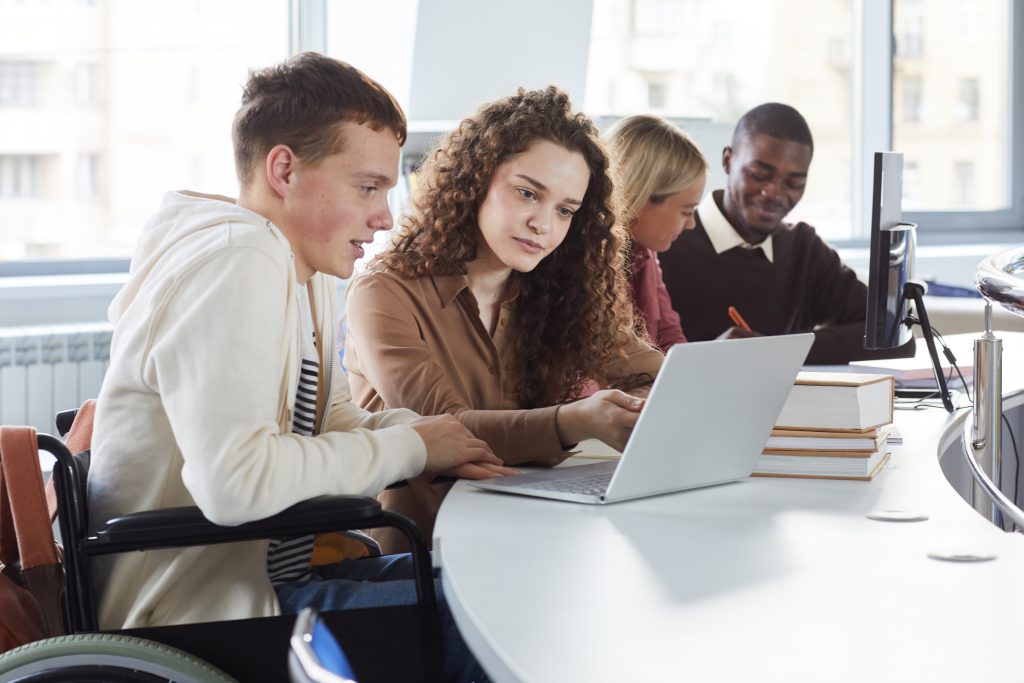Adaptive learning is a type of educational method that employs algorithms to assess student progress and adapt the instruction accordingly. It utilizes data from various sources, such as assessments, responses to questions, and other forms of feedback, to adjust the instructional experience based on the individual needs of each learner.
Many different types of adaptive learning technology are available, ranging from software and interactive websites to mobile apps. They can also be used in various educational contexts, including classrooms, online courses, and corporate training programs. Examples are adaptive learning platforms, adaptive textbooks, and intelligent tutoring systems.
In general, these technologies can help create a more equitable educational environment, as they can reduce variation between students by addressing the following:
- Increased Engagement Among Students
Engagement is a concept that refers to active involvement in learning activities and interest or enthusiasm for those activities. What is adaptive learning? With adaptive learning, educators can create tailored instruction that better matches each student’s interests.
To illustrate, imagine a student with interest in music. In a traditional classroom environment, this student is unlikely to receive instruction tailored to their interest. They’ll most likely receive the same instruction as the other students in their class. As an effect, the student may become bored and disengaged.
With adaptive learning, however, a teacher can create an individualized lesson specifically designed for music lovers and be adapted to suit the individual learner’s needs and preferences. As a result, the student is likely to remain engaged and excited about the learning process.
- Improved Retention
Retention measures how much knowledge a learner can remember over time. In an educational setting, students must be able to retain the material they’re learning. That’s because, without retention, the knowledge acquired during learning sessions is quickly forgotten.
Learning retention is believed to be improved through spaced repetition, practice tests, and personalized feedback. All of these strategies are made possible by adaptive learning technology.
By leveraging powerful algorithms, adaptive learning systems can identify the areas of difficulty for each learner. Once done, these can provide them with supplemental instruction or practice materials to help improve their understanding. An example is a practice quiz that adapts to the learner’s responses and provides personalized feedback on their knowledge of the material.
- Better Feedback
Technology will still change education for years to come. In the next five years, it’ll pave the way for the explosion of e-learning and utilization of artificial intelligence (AI) in schools. Currently, it has already started making waves through adaptive learning technology.
One facet of adaptive learning which makes it impactful in schools is its ability to provide real-time feedback to students. Feedback is essential as it allows them to:
- Make adjustments in their study habits or seek additional help when needed;
- Take a more active role in the learning process and progress at their own pace;
- Take advantage of the appropriate resources;
- Interact with materials in ways that best suit their individual needs and preferences; and the like.
By collecting data from various sources and providing real-time feedback, adaptive learning also fosters improved collaboration among students and educators. This allows educators to adjust instruction for the whole class or individuals if needed. And it encourages peer-to-peer discussions that can help promote a more profound understanding of topics.
- More Efficient Use Of Classroom Time
As a teacher, many aspects of the learning process require time and effort. These areas include designing, facilitating, and assessing instruction. With adaptive learning, teachers can use technology to improve their efficiency and effectiveness.
For example, the teacher can use technology to automate grading, student assessment, and feedback. It can be used to design interactive learning activities customized for individual students too. This allows teachers to spend more time facilitating discussions, guiding students in their learning process, and providing personalized instruction.
By doing these things, teachers can make more efficient use of their classroom time and create a better learning experience for their students. This, in return, can help improve student engagement and academic success.
- Improved Learning Outcomes
Learning outcomes measure how much a student has learned from their educational experiences. These are usually in the form of grades, scores, or assessment results. Most schools use learning outcomes to measure student performance and achievement. Many school districts even use these outcomes to track student progress over time and provide a basis for comparison with other districts. Most times, they use it for budgeting, training, and staffing purposes too.
By adapting knowledgement management tools for adaptive learning, teachers can offer personalized instruction, accessible materials, and tailored assessments to improve academic achievement. Moreover, with faculty having more time to focus on the individual student, it’s reasonable to assume that this technology could improve academic achievement and test scores.
Conclusion
Adaptive learning is an effective and innovative way to personalize instruction. Plus, it can help maximize classroom time while ensuring that each learner receives the best possible education for their level of understanding.
